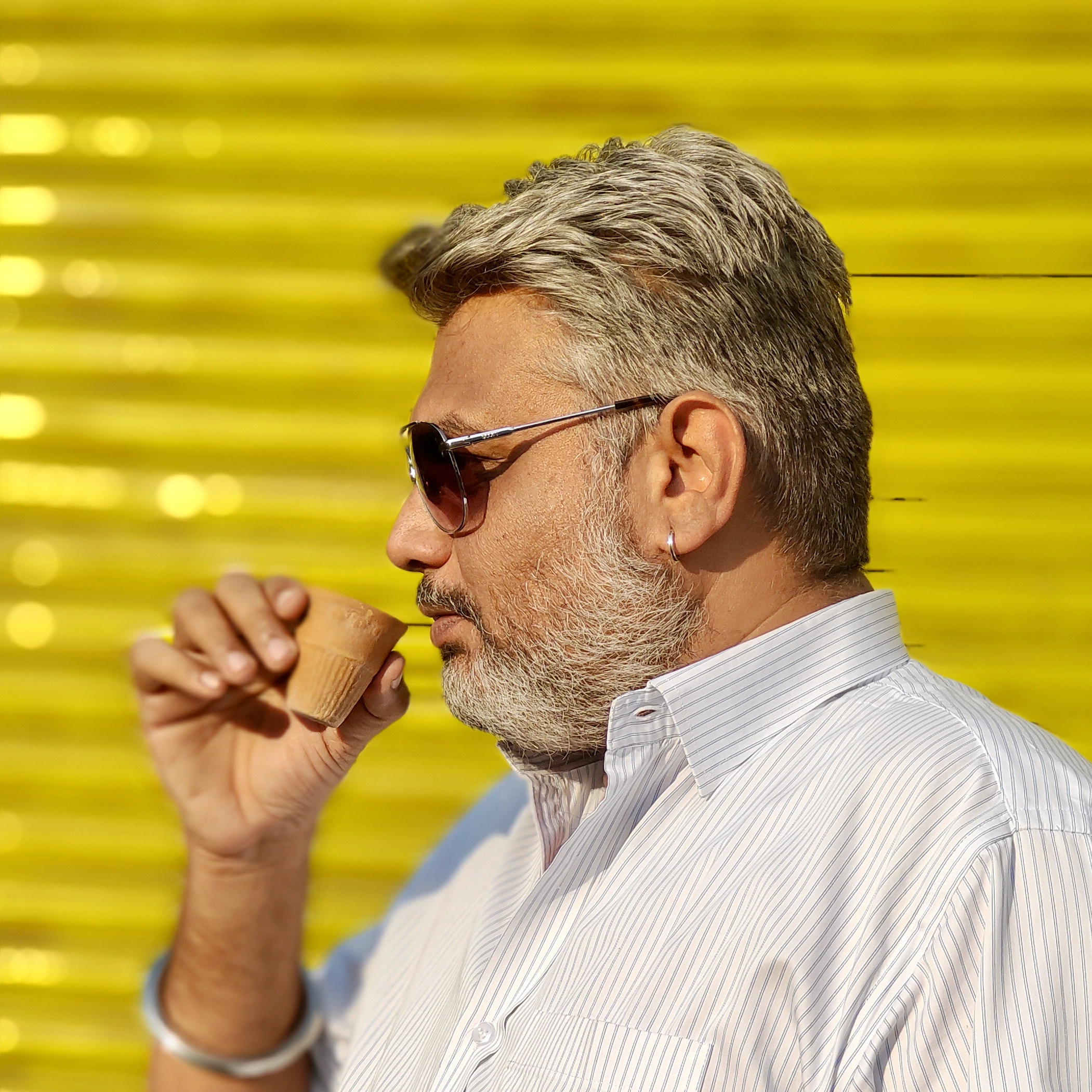BOOK REVIEW | NAIMISHA – GOD'S OWN STORY: THE MIDDLE GAME – MOVES & COUNTER MOVES | SESHA
- Sameer Gudhate
- Sep 13, 2024
- 4 min read

When mythology meets strategy and philosophy, the result is an epic that transcends time. Naimisha – God's Own Story: The Middle Game – Moves & Counter Moves by Sesha is a masterpiece in Indian mythological retellings, blending ancient tales with timeless lessons. With the world of Mahabharata as its foundation, this book takes the reader on a strategic, thought-provoking journey that mirrors a chess game—filled with tactical moves, counter-moves, and surprising developments. If you're someone who appreciates mythology with depth, this book is a must-read.
From the moment I picked up this book, I was instantly reminded of how mythology can be more than just stories. It's a lens through which we explore fate, power, and human emotions. Sesha, a brilliant storyteller, has previously enchanted readers with the first installment of the Naimisha series. In this sequel, the author continues to unravel Krishna’s influence on the Pandavas and Kauravas, offering a chessboard-like battle of wits and destiny. Having not read the prequel, I was slightly worried, but the author's narrative skill made it easy for me to jump right in.
In this second installment, we see Krishna evolving into a divine figure, revered by some and feared by others. The Pandavas and Kauravas are entangled in a political and familial struggle for power, with Krishna guiding events behind the scenes. We see Draupadi enter the picture, adding another layer of complexity as her marriage to the Pandavas changes the dynamics. The novel follows Krishna's battles, the rise of the Indraprastha empire, and the game-changing dice match that ultimately sets the stage for the great war of Mahabharata. What makes this story unique is not the retelling of familiar tales but the layered exploration of strategy, faith, and human choices.
Sesha’s writing is smooth and engaging, making what could have been a heavy and dense read feel surprisingly accessible. The prose is lyrical at times, bringing moments of history and mythology to life with vivid detail. His descriptions of battle scenes and palace politics are so well crafted that you feel like a spectator in Hastinapur. What I enjoyed most, though, was the balance between philosophy and action—Sesha doesn’t let the deeper themes slow down the pacing, which keeps the reader invested throughout the narrative.
Krishna, of course, stands out as the most intriguing character. Sesha has managed to capture his duality—both human and divine—beautifully. Krishna’s role as a strategist and statesman, rather than an all-knowing god, is refreshing. The fictional characters, Animish and Asareer, add another layer of perspective, especially Animish, who represents the skeptical viewpoint, allowing readers to see Krishna through a more critical lens. The ideas of destiny versus free will and faith versus skepticism are explored through these characters’ experiences, making the story not just about events but about inner conflict as well.
The pacing is spot on. The book starts with a glimpse into the Pandavas’ and Kauravas’ childhood in the Gurukul, building the foundation for the complex relationships and rivalries that shape the rest of the story. The alternating chapters between the happenings in Hastinapur and Krishna's rise in Dwarka create a parallel narrative that moves the plot forward seamlessly. The chess-like structure of moves and counter-moves, as the Kauravas and Pandavas vie for advantage, keeps the tension high throughout the story.
One of the strongest themes in the book is the battle between free will and destiny. The characters are constantly making choices, but there’s always the sense that they are caught in the larger web of fate. Another theme is the power of faith—whether it’s faith in oneself, in a higher power, or in destiny. Sesha also masterfully explores the notion of power—how it's gained, wielded, and often lost—and the consequences of both good and bad decisions.
I found myself emotionally invested in several moments, especially during Draupadi's Swayamvara and the tense game of dice. The drama surrounding Krishna's strategic decisions and the Pandavas’ fate left me reflecting on the nature of sacrifice and loyalty. The tug-of-war between destiny and human agency is emotionally resonant and thought-provoking. By the end, you don’t just read about these characters—you feel their struggles.
The greatest strength of this book lies in its character development and rich world-building. The way Krishna, Draupadi, and the Pandavas evolve throughout the story keeps the reader hooked. Sesha’s ability to weave philosophy into the narrative without losing momentum is another major plus. His vivid descriptions of pivotal moments, like battles and political maneuvers, leave a lasting impression.
If I had to point out a weakness, it would be that some of the philosophical musings slow down the narrative at times. While I enjoyed these parts, they may not appeal to all readers, especially those looking for faster-paced action sequences.
As someone who has always been fascinated by mythology, this book was a delightful read. Sesha’s portrayal of Krishna as more than just a god, but a brilliant strategist, really resonated with me. His approach to storytelling brings out the human element of these divine figures, making them more relatable. The themes of power, faith, and destiny lingered in my mind long after I turned the last page.
Overall, Naimisha – God's Own Story: The Middle Game – Moves & Counter Moves is an enthralling read for anyone interested in Indian mythology. It’s a fresh take on the Mahabharata that brings the familiar story alive with new insights and layers of depth. Highly recommended for lovers of epics, strategy, and philosophical reflections on life and destiny. I can’t wait to see how Sesha unfolds the final chapters of this epic saga!







Comments